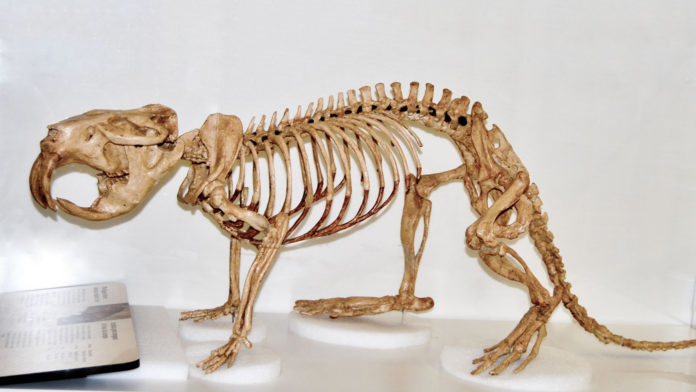The end of the last Ice Age saw the extinction of many of the world’s large land-dwelling animals, like mastodons and woolly mammoths. But many people may not know before that extinction event, Canada’s most iconic and largest rodent also had a bear-sized cousin.
Giant beavers (Castoroides) lived alongside modern beavers for tens of thousands of years, and researchers from Western University and the Yukon Palaeontology Program have new information that helps explain why only the latter survived to present day. Their study was published in Scientific Reports.
Like the beavers we know today, giant beavers had large distinctive front teeth, but the new analysis shows that they didn’t use them to eat or cut down trees or woody plants.
Previously, their diet was an open question. Some models predicted that Castoroides would have eaten submerged plant matter in calm wetlands like modern muskrats. Others predicted a mix of aquatic and terrestrial food sources, including tree-cutting and dam-building behaviour.
The study looked at the fossilized bones and teeth of 11 giant beavers, analyzing the stable carbon and nitrogen isotopes of their bone collagen, a composition that would match their diet; terrestrial and freshwater plants have different chemical signatures that transfer to the bones and tissues of the creatures that eat them.
The team used modern plant samples for comparison, many of which are known to have existed in the same timeline as their Castoroides fossil samples.
The chemical analysis suggests that Castoroides favoured submerged aquatic plants for food. This also fits with the geometry and features of their teeth, as the angle and dull edges of their incisors aren’t a match for the chisel-like incisor edges of modern beavers.
The findings have implications on how giant beavers would have impacted their late Pleistocene environment. If they were tree-cutters, they would have been major ecosystem engineers who changed the landscape of local hydrological patterns. There is also no evidence of giant dam structures from that time period.
The study instead suggests a diet of freshwater plants, meaning that giant beavers would have kept shallow waterways clear of excess aquatic plant growth and promoted aquatic biodiversity. However, this made giant beavers highly dependent on wetland habitats, not only for shelter from predators, but also for food.
Giant beavers flourished during the Ice Age because glacial meltwater provided lots of swamps and shallow lakes that made ideal habitats. The end of the Ice Age meant the ice sheets retreated, yielding warmer and drier climates. The last giant beavers were isolated in the Great Lakes region, and they ultimately became extinct.
“The ability to build dams and lodges may have actually given (modern) beavers a competitive advantage over giant beavers because it could alter the landscape to create suitable wetland habitat where required,” explains co-author Fred Longstaffe, professor of Earth sciences at the Western University.
“Giant beavers couldn’t do this.”
Understanding the diet of giant beavers helps us understand their extinction, but it also helps us understand their lives. And while 200+ pound beavers no longer walk the Earth, they still left their mark on Canada in the Ice Age.




































